
There are a lot of choices in the world of pocket-sized CCW pistols out there, but is a .380 ACP the right choice for you?
Just how much is enough? This question is the root of endless discussions on choosing the correct caliber for your defensive handgun. A round that is always in the mix is the age-old .380. To many this round is quickly brushed off as a 9mm set on “stun,” yet none of those jokesters are willing to be “stunned” with a .380 to prove their point. Many people are unaware that the .380 is the creation of John Moses Browning, the creator of our beloved 1911 pistol. Blasphemy you may say, yet the .380 has a history many are unaware of. In fact, the .380 is the round used by Gavrilo Princip in 1914 to assassinate Archduke Franz Ferdinand and his wife which eventually led to the first world war. Talk about a shot heard round the world. The Colt Pocket Model 1908 chambered in .380 was also carried by General Patton in World War II. So to dismiss the .380 is a mistake. However, we are not here to explore ballistic history. Let’s take a look at the pros and cons as well as the whys and why nots of the .380 for the modern CCW user.
[one_half]
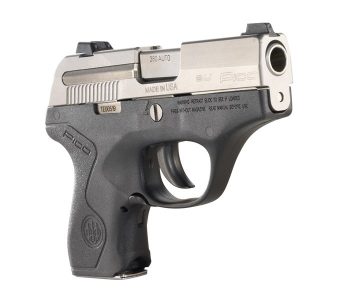
Compact .380 ACP pistols, like this Beretta Pico, offer reasonably power in a very small and portable package. Image courtesy of Beretta.
[/one_half]
[one_half_last]
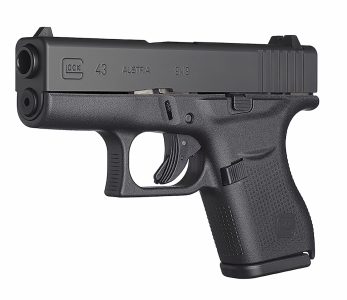
As a sign of how hot the .380 market is, even Glock has gotten on the bandwagon with its Glock 42. Image courtesy of Glock.
[/one_half_last]
In this Corner
Currently, guns chambered in .380 tend to fall into the pocket pistol category. People are looking for a lightweight gun that is easy to carry and produces manageable recoil. The small size of these guns is a major benefit because they are easy to carry and conceal. Many people are unable or unwilling to carry a full-size gun and gun manufacturers have addressed this market with pocket guns that in most cases are less than five inches long and weigh in at less than a pound. Ballistically, the .380 round is considered by many to be the “power floor” or smallest round to be used in a self-defense capacity. Rounds generally average in the 90-grain area and produce decent penetration considering their size. Without question, any .380 gun carried for defensive purposes should be loaded with hollow points. So in regards to size and weight, the .380 has some solid benefits.
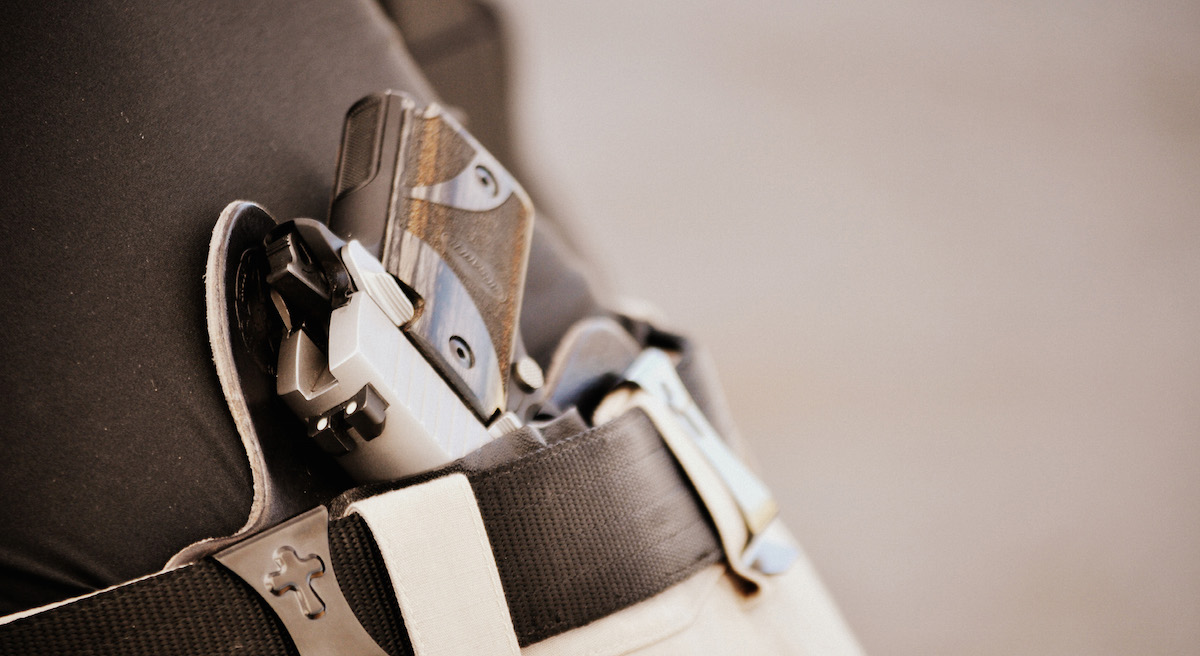
Picking out your .380 is not all there is to the choices you face—you must also decide how you are going to carry it.
And in This Corner
The downside of our little friend, however is its size, both the round and the gun. The .380 is simply not a very powerful round. While I loathe the term “stopping power” in regards to handguns, the .380 lacks the mass and velocity to cause significant trauma capable of consistently “stopping” an adversary when compared to rounds like the .45 ACP. Have there been many people shot and stopped with a .380? Absolutely. However, there have also been countless people shot with this round that were not effectively stopped. It is not a question of “will it work,” it is a question of “will it consistently work?” When it comes to handgun caliber it is better to go with a caliber that has a higher probability of physically and or psychologically stopping an adversary. It is not always a bigger is better scenario contrary to what the devotees of the .45 ACP round may say. Ballistic performance should be our driving factor. As for the size of the gun, the pocket pistols lack sufficient real-estate to get an optimal shooting grip. This is especially true for those with bigger hands. The byproduct of this is excessive movement of the gun under recoil. Slow fire shots may be easy to manage, but longer strings of fire tend to cause groups to climb and spread out. When you only have an average of six rounds to begin with, all of them need to be on target.
Help You Carry
So, you have weighed the pros and cons and have decided to carry a pocket pistol chambered in .380. Sure, a larger and more powerful gun might be a better companion, but the ease of carry and size of the .380 is right for you and your situation. Now, let’s take a look as some carry methods as well as a few other points to consider. While the term pocket pistol is catchy, it leads some people to believe they can just drop the gun in a pocket and go. However, this mode of carry has pros and cons (like everything always seems to).
[one_half]
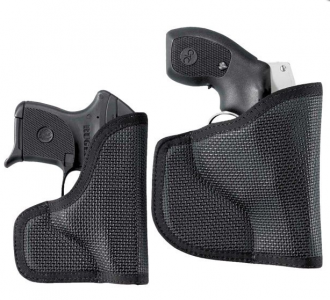
A simple and easy way to carry a CCW gun is in your pocket, but I advise you use a holster such as the DeSantis Nemesis rather than just dropping it into a pocket. Image courtesy of Galco.
[/one_half]
[one_half_last]
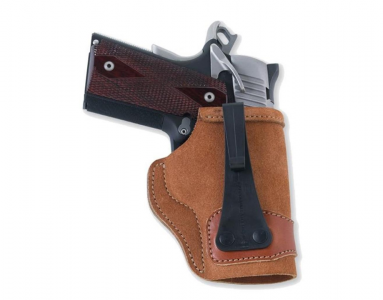
A good inside-the-waistband holster, such as the Galco Tuck-N-Go, is a good option as well for your .380 of choice. Image courtesy of Galco.
[/one_half_last]
Pocket carry is simple and easy (but I advise you to use a dedicated pocket holster like the DeSantis Nemesis to ensure it is safe and secure). You can put your hand in your pocket and on the gun without arousing any undue attention, and it is very easy and simple to use. However, it also makes the gun inaccessible while you are sitting and is also makes for an awkward draw in the best of circumstances. Also, once you place your pistol in a pocket, that pocket is now out of bounds for any other item. Extra things bouncing around in a pocket will ultimately find their way into the trigger guard and potentially cause a negligent discharge.
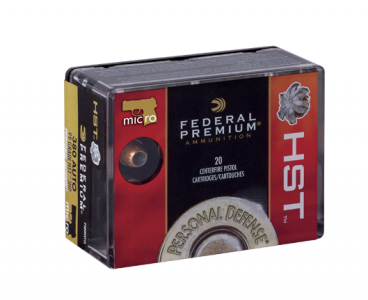
With a round like the .380 that is at the “floor” of defensive power, you should select as effective a load as possible. Federal’s HST line is a good option. Image courtesy of Federal.
Other options include inside the waistband holster (like the Galco Tuck-N-Go) or even ankle holsters (like the Gould & Goodrich Ankle Holster). They are light and small enough that they are hardly noticeable. One carry method used by many women is a purse carry. It is a personal opinion, but I would avoid this if at all possible. The reasons are many but at the top of the list is the time it takes to get the gun into the fight and an overall lack of security of the gun inside the purse. If you do carry with a purse, you need to train with it as well as make sure you have a holster inside for your gun. Or better yet, choose a purse made by a professional company dedicated to this type of carry. Ammo-wise, I will once again point you towards hollow points as offering the best performance. Federal HST or Hornady XTP JHP are two options that will serve you well.
When the Black Flag Rises
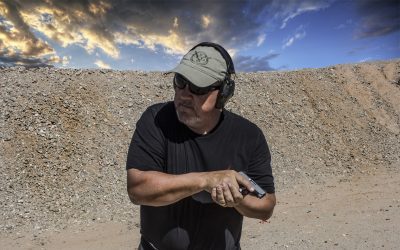
Range time with your selected handgun is as important as the gun you select. Make sure you can hit where you need to when you need to under duress.
The last thing we will discuss is just what to do with your .380 should a bad day come. Shot placement is key as with all shooting. Placing your shots center mass in succession will lead to the best chance of discouraging their assault. If you are in close quarters proximity, I am a believer in multiple head and face shots. Even if they do not prove to be “cranial ocular” hits, they are massive blows to the head which can produce the desired effect. This may not be vogue in some shooting circles, but it is a very powerful deterrent. If you agree, I recommend doing some practice on the range of drawing from your holster close to the target and aiming for these head shots. I would also work on drills with torso shots as well just to make sure you are ready for any contingency.
The choice of concealed carry gun is a very personal one. Educate yourself about what your options are. Simply relying on a friend or even gun shop owner is not enough. They will not be standing in your shoes should you have to present the gun in self-defense. Choose wisely and remember that while the .380 is not a hand cannon, it is better than having no gun in a fight for your life. And this guide is by no means exhaustive, but rather is meant to get you thinking about what your self-defense needs are and how best to address them.